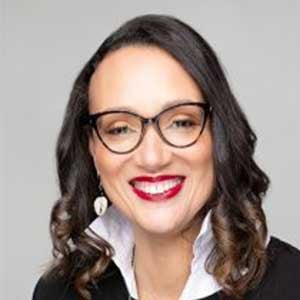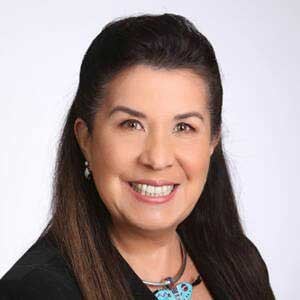Reflections from the Council on Foundations' webinar
The 2020 Council on Foundations-Commonfund Study of Investment of Endowments for Private and Community Foundations (CCSF) is the field’s most comprehensive and authoritative study on investment and governance policies and practices. The 2020 report surveyed and analyzed data from 260 U.S. private and community foundations, representing $115.4 billion in total investable assets. Since the inception of the study, we have surveyed respondents on Environmental, Social, and Governance (ESG) investing with a particular focus on the environment and investing in diverse managers. The most recent trend data from the CCSF shows that interest in both ESG and investing in diverse managers is continuing to increase, albeit slowly. Using the most recent data on ESG and diverse manager investments gathered by the CCSF, Kathleen Enright, President and CEO of the Council on Foundations (COF), moderated a December 2021 virtual convening with three foundation leaders at the forefront of aligning their investment practices with their organization’s mission:
 |
 |
 |
| Tonya Allen President, McKnight Foundation |
John Palfrey President, MacArthur Foundation |
Valerie Red-Horse Mohl CFO, East Bay Community Foundation |
Following are the emerging trends that were highlighted in this important conversation.
Foundations do not have to sacrifice returns to align endowment portfolios with their missions and values.
East Bay Community Foundation, a black-led foundation in Oakland, CA, has been working toward moving their portfolio to 100 percent mission alignment for a while now. There was a misconception about sacrificing profit to generate social impact but as the organizational leadership and its board began to realize that isn’t true, the question became: how do we reach 100 percent mission alignment? It starts with the board, investment committee, staff, and investment partners. East Bay is committed to doing the work with their investment advisor. They reworked their Investment Policy Statement (IPS), defined priorities, and focused on racial equity. Within a year, they rewrote the policy, focused on black emerging managers, Indigenous, and POC (BIPOC1), and established a quadruple bottom line: community-based investment, BIPOC managers, positive returns, and mission alignment.
As a community foundation, East Bay serves the greater East Bay area as well as donors in the surrounding community. The foundation found that donors want to be a part of mission-aligned investing and investing in diverse managers, so much so that it has become a selling point for East Bay; donors want to do well and do good, and community foundations can be good partners to provide those opportunities.
Under Tonya Allen’s leadership, the McKnight Foundation, a $2.5+ billion family foundation in Minneapolis, MN, is working to help speed the transition to Net Zero2. McKnight is taking a comprehensive approach to reduce greenhouse gas emissions, scour portfolios for opportunities to divest from fossil fuels, and invest in catalyzing new markets to aid in the transition to solar, wind and other renewable energy sources.
Like many leaders in the space have been articulating, this work must be done in a comprehensive way and philanthropic organizations should combine efforts where possible to achieve the necessary scale to affect change. There is potential to capture, in the words of Tonya Allen, “almost $3 trillion in carbon solutions if foundations work together.”
John Palfrey, President and CEO of the MacArthur Foundation in Chicago, IL, echoed these sentiments and shared the foundation’s strategy to divest from fossil fuels and invest in clean energy. MacArthur is also investing in diverse managers (women/BIPOC); emphasizing that he believes foundations can beat benchmarks and do this work by incorporating this strategy in a thoughtful way.
We must approach things differently and seek alignment.
Tonya Allen shared, “if the portfolio is working against our programmatic interest, then we get beat before we get into the door to make a grant.” Additionally, another foundation leader in the space, Darren Walker, has shared: “What’s the purpose of perpetuity if you don’t have a planet?” The panelists for this COF panel really homed in on these points: Focusing on how climate resiliency and sustainable investment practices represents values alignment in a way that can potentially benefit portfolios and efforts to combat climate change. The same thing is true for diverse managers. Exploring opportunities to invest in diverse managers isn’t in opposition with a foundation’s programmatic work or fiduciary responsibility, it is more than likely aligned.
A recent report released by the John S. and James L. Knight Foundation measuring diversity in the U.S. financial industry found that only 1.4 percent of assets are entrusted to asset management firms owned by women and/or people of color, despite diverse-owned firms’ investment performance matching those of their less-diverse peers.3
For East Bay, they redefined risk and how they diligence managers. Valerie shared this reflection: “The norm is that you look at managers that have worked together for a long time to reduce risk, but most diverse managers haven’t worked together for a long time, or they don’t have a long track record, so East Bay looks at investment acumen, not track record. If the issues are systemic, then it’s reasonable to believe that diligence processes perpetuate bias in the system.”4
MacArthur looks at diverse managers and what they refer to as “business diversity”. Encouraged by John Rogers at Ariel Investments, MacArthur not only looks at their asset managers, they also focus on who they do business with across the entire foundation to ensure there is diversity.
Aligning foundation endowments with mission and values is doable.
John Palfrey shared: “1) just start, do something, 2) it is doable.” At MacArthur, it started with data and the work of the Knight Foundation. They first started by looking at their investment committee, who is on the committee? Are they value-aligned? Do they understand fiduciary duty as a comprehensive concept, inclusive of financial returns and mission alignment?
Valerie from East Bay shared that most community foundation board members are volunteers and want to do a good job. East Bay started with educating their board and focusing on investment terminology, strategies, and portfolio construction methodologies. All three panelists agreed: A foundation embarking on this work needs complete buy-in from board, staff, donors, and the community.
As a field, we need to continue to make investments in infrastructure, education, measurement and implementation tools focused on returns, impact, and alignment.
Philanthropy has a duty to lead.
More fundamentally, each panelist discussed the importance of understanding your foundation’s values. What is your mission? Is everyone aligned? Do staff and board have a shared understanding of the foundation’s values and mission? Understanding the significance of aligning your values and mission with your investments (investment goals) requires deep and intentional effort. Your foundation should be committed to this work and it is the foundation’s leadership responsibility to guide them.
Secondly, if the philanthropic sector is asking foundations to focus on impact, foundations should collectively invest in doing the work well. For example, Valerie highlighted that the foundation community should think about a way to share due diligence summaries on diverse managers, as sharing that information will help investors to allocate to diverse managers. Foundations should share impact strategies and data on their effectiveness. The field needs to understand that divestment and investment are both impact strategies. Divesting from fossil fuels in combination with investing in renewable energy is a part of stewarding a just transition. Organizations such as Mission Investors Exchange (MIE), Global Impact Investing Network (GIIN), and Intentional Endowments Network (IEN), to name a few, are organizing and educating institutional investors to continue to foster growth and collaboration in this area. The Foundation community must also push on their consultants, their OCIO’s and other service providers to make sure that value-aligned investing happens and becomes mainstream; foundations must advocate!
Tonya Allen reflected on “what’s next?”. She summarized ideas around deepening and sharing best practices, getting better at constructing climate resilient portfolios, investing in diverse managers, and supporting and collaborating with others in the field.
Additional Key considerations from the Institute:
Foundation leaders and boards with the courage and vision to move their foundation endowments toward mission alignment should be supported. Board members who are committed to the mission but lack the education need resources. Foundation staff and other stakeholders can help each other understand that values alignment doesn’t mean sacrificing returns. With continued education, it will become more apparent that the path may be long, but foundations can get there; in the most aspirational sense, they are meant to be wholly mission-oriented and values-aligned.
The foundation community should continue to right-size strategizes for small and mid-size private and community foundations. It is the only way foundations can collectively organize the trillions of dollars in institutional philanthropic assets and transform market behaviors. Thought leadership constantly highlights the larger foundations with over a billion dollars in assets. The small and mid-size foundations need appropriate and equally effective strategies and tools. But as John mentioned during the webinar, it is doable, and all we need to do is start. For example, place-based, community-centered investment strategies serve smaller foundations well, coupled with partnerships with community banks/financial institutions. Collaboration works well too; pooling resources with other foundations, corporate, and local government partners can help smaller foundations redefine and manage risk while also participating in pooled resource strategies for collective impact.
Investing in diverse managers is possible across ALL asset classes and has the potential to benefit portfolios and institutional investors. Every asset class can be reviewed and examined for opportunities to invest in diverse managers.
Foundation investment committees and board members should remember that although third party investment partners (consultants, OCIO providers) are ideally close strategic collaborators, they are, at the end of the day, still in a transactional, customer service role. Foundations pay investment fees for their service. If an integral part of the service your foundation needs is a clear focus on mission-aligned investing then your investment partner should be able to deliver on those requirements. If they are not displaying a commitment to your values-aligned efforts, then it may be time to find a new partner.
- Black, Indigenous, People of Color
- A target of completely negating the amount of greenhouse gases produced by human activity, to be achieved by reducing emissions and implementing methods of absorbing carbon dioxide from the atmosphere.
- Knight Foundation, Asset Management Industry Severely Lacking Diversity, New Knight Foundation Study Finds; Signals Untapped Opportunity for Investors, December 2021
- The Due Diligence 2.0 Commitment: Shifting due diligence practices to mitigate bias and increase opportunity for BIPOC asset managers




